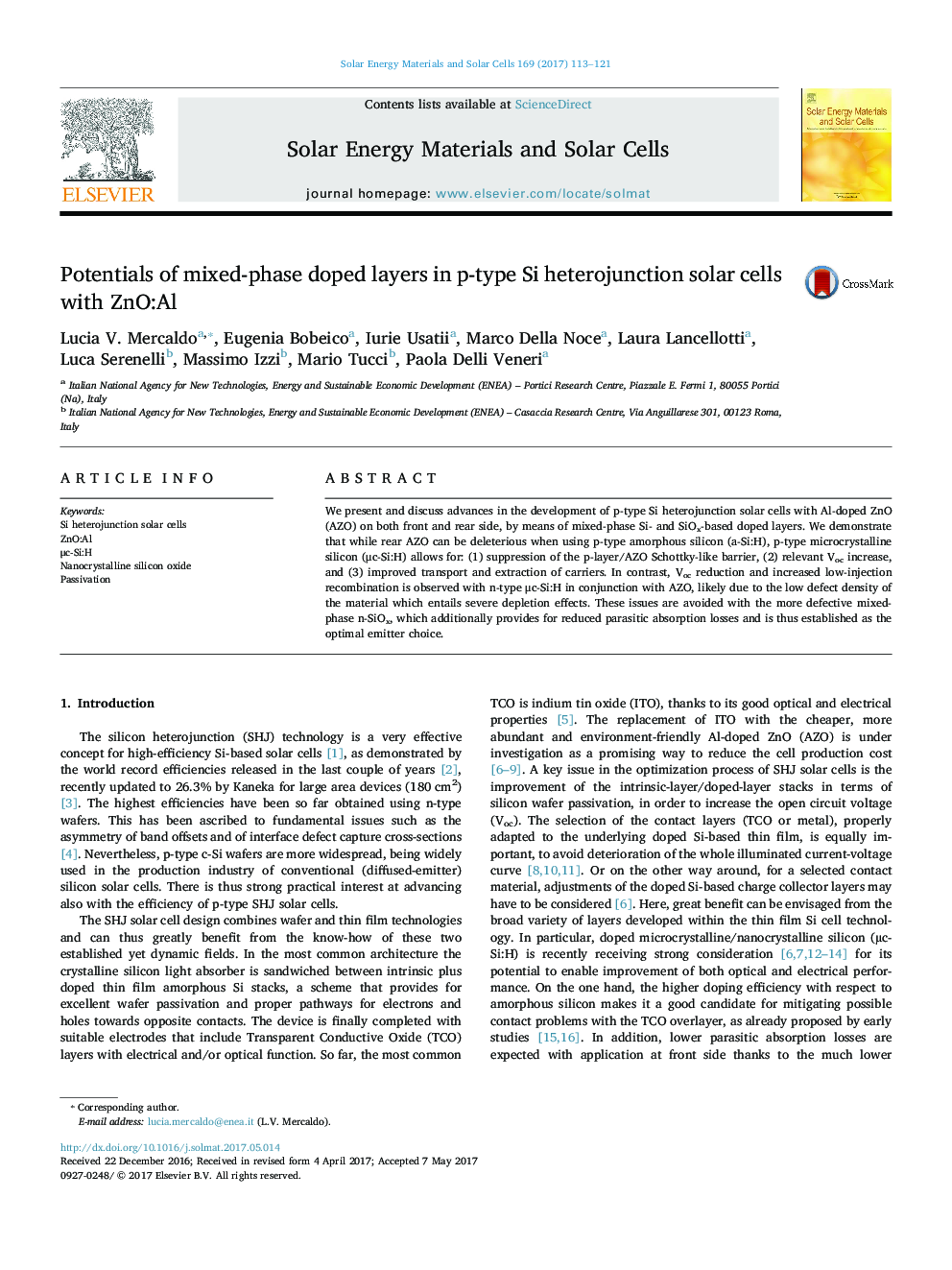| Article ID | Journal | Published Year | Pages | File Type |
|---|---|---|---|---|
| 4758745 | Solar Energy Materials and Solar Cells | 2017 | 9 Pages |
Abstract
We present and discuss advances in the development of p-type Si heterojunction solar cells with Al-doped ZnO (AZO) on both front and rear side, by means of mixed-phase Si- and SiOx-based doped layers. We demonstrate that while rear AZO can be deleterious when using p-type amorphous silicon (a-Si:H), p-type microcrystalline silicon (μc-Si:H) allows for: (1) suppression of the p-layer/AZO Schottky-like barrier, (2) relevant Voc increase, and (3) improved transport and extraction of carriers. In contrast, Voc reduction and increased low-injection recombination is observed with n-type μc-Si:H in conjunction with AZO, likely due to the low defect density of the material which entails severe depletion effects. These issues are avoided with the more defective mixed-phase n-SiOx, which additionally provides for reduced parasitic absorption losses and is thus established as the optimal emitter choice.
Related Topics
Physical Sciences and Engineering
Chemical Engineering
Catalysis
Authors
Lucia V. Mercaldo, Eugenia Bobeico, Iurie Usatii, Marco Della Noce, Laura Lancellotti, Luca Serenelli, Massimo Izzi, Mario Tucci, Paola Delli Veneri,
